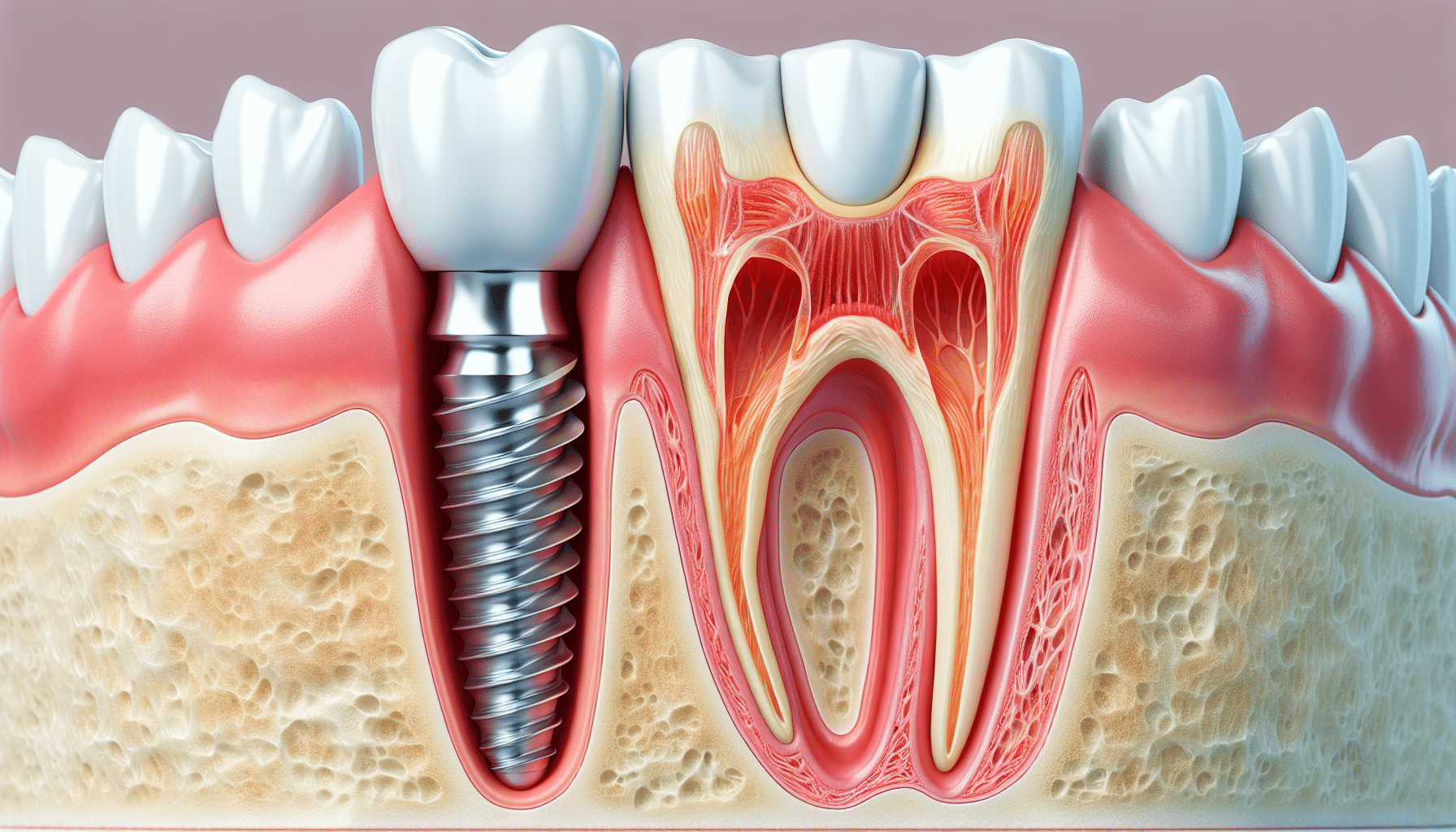Our Dental Sense Statements
Our Dental Sense Statements
Blog Article
The Ultimate Guide To Dental Sense
Table of ContentsThe Ultimate Guide To Dental SenseSome Known Details About Dental Sense Our Dental Sense PDFsIndicators on Dental Sense You Need To Know
are clinical gadgets operatively implanted into the jaw to restore a person's ability to chew or their appearance. They supply support for artificial (phony) teeth, such as crowns, bridges, or dentures. When a tooth is lost as a result of injury or condition, a person can experience difficulties such as rapid bone loss, malfunctioning speech, or adjustments to eating patterns that cause discomfort.Oral implant systems contain an oral implant body and dental implant abutment and might also consist of a joint fixation screw. Dental implant vs bridge. The dental implant body is operatively put in the jawbone instead of the tooth's root. The dental implant joint is usually attached to the dental implant body by the joint addiction screw and expands with periodontals into the mouth to support the affixed artificial teeth
(https://hub.docker.com/u/dentalsense1?_gl=1*1hbckpe*_ga*NDQyNDY0NDI5LjE3MzY1MTc3NTQ.*_ga_XJWPQMJYHQ*MTczNjUxNzc1NC4xLjEuMTczNjUxODA1MC42MC4wLjA.)Framework of The Oral Implant System selecting oral implants, speak to your oral copyright regarding the possible advantages and dangers, and whether you are a prospect for the procedure. Points to consider: Your general health and wellness is a vital element in establishing whether you are an excellent prospect for oral implants, how long it will take to heal, and the length of time the dental implant may remain in location.
Smoking might influence the healing process and lower the long-term success of the dental implant. The healing procedure for the implant body may take numerous months or longer, throughout which time you commonly have a short-lived joint instead of the tooth. the oral implant procedure: Thoroughly adhere to the oral health directions offered to you by your dental provider.
The Facts About Dental Sense Uncovered
Implant failure can result in the need for one more surgical procedure to fix or change the dental implant system. Restores the capability to chew Recovers aesthetic appearance Helps keep the jawbone from shrinking due to bone loss Maintains the health of the bordering bone and periodontals Aids maintain nearby (close-by) teeth secure Boosts high quality of life Damages to surrounding all-natural teeth during dental implant placement Injury to the surrounding cells during surgery, such as sinus opening Injury during surgical procedure (for instance, fracture of bordering jawbone) Insufficient feature, such as really feeling like the teeth do not attack together generally A sensation that the tooth is loose or twisting in location arising from a joint screw loosening up Implant body failing (looseness of the implant body) due to systemic infection, which may be most likely in people with unchecked diabetes mellitus due to neighborhood infection in bone and periodontals sustaining the dental implant body because of delayed healing, which may be more probable in people who smoke Difficulty cleansing the gum tissues around the dental implant, resulting in bad dental health Neglected gum disease Post-surgical pins and needles as a result of nerve impingement or damage Always notify healthcare companies and imaging specialists that you have oral implants prior to any type of magnetic vibration imaging (MRI) or x-ray treatments.
FDA is not knowledgeable about any type of adverse occasions reported for MRI or x-ray treatments with dental implants. Dental implants systems are generally made from products that follow worldwide agreement criteria of the International Organization for Standardization (ISO) or ASTM International. These requirements have details of what makes a risk-free product.

A dental implant is a framework that replaces a missing tooth. With screw-like gadgets, the cosmetic surgeon inserts an implant into the jawbone, and it acts as an anchor for an artificial tooth, called a crown. A tool called a joint attaches the fabricated tooth to the oral implant. The crown is tailor-made to fit the person's mouth and match the shade of their teeth.
The Of Dental Sense
Some individuals are not eligible for dental implant surgery. It is for oral specialists to operate people with: intense illnessuncontrollable metabolic diseasebone or soft tissue disease or infectionIf these concerns are solved, a person can have the surgical treatment. In, oral cosmetic surgeons avoid operating on people with: If people with any one of the above undertake dental implant surgical procedure, there is a greater risk of the dental implant falling short.

Oral implant surgery is an individualized procedure. It's not the very same for everybody. However the following gives a look at this now basic summary of what you can anticipate your dentist, dental cosmetic surgeon, periodontist or prosthodontist to do: Place the dental implant operatively. Provide you time to heal. Connect the article and final crown, bridge or denture.
Next, your cosmetic surgeon will carefully position the dental implant right into your jaw. Finally, your specialist will reposition your gums and close the cut with stitches. If your dental implant is near the front of your mouth, your dentist will certainly make a momentary tooth for you to put on up until you recover. By doing this, you won't have a void in your smile while you recover.
The Definitive Guide to Dental Sense
Throughout the recovery phase, your jawbone should fuse to the dental implant. This procedure can take anywhere from three to 9 months.
As soon as your implant heals, your dental professional can attach the joint (tiny adapter message) and your last reconstruction (crown, bridge or denture). This typically takes about one hour to complete and might need a second minor surgery. You should not feel any type of pain throughout your dental implant treatment since your provider will certainly use medication to numb your gum tissues.
Report this page